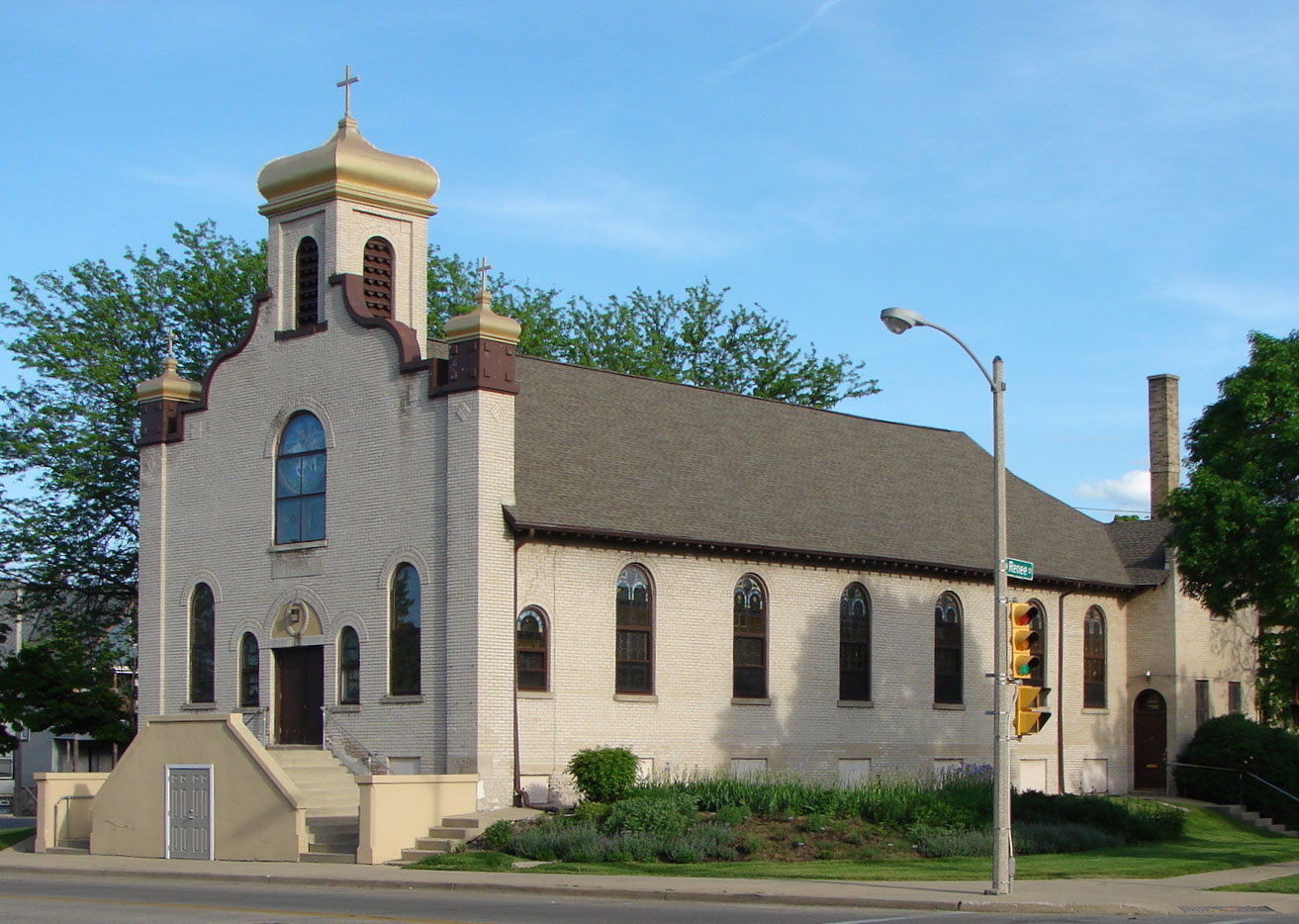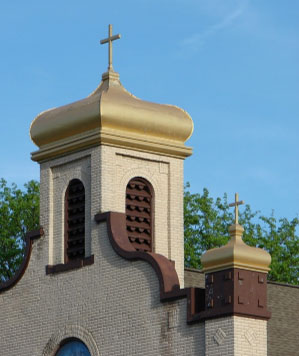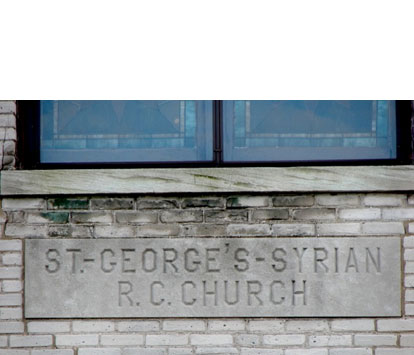57. St. George’s Melkite Catholic, 1917
1615 West State Street
Architects: Erhard Brielmaier and Sons

The first Arabic-speaking immigrants to Milwaukee, who would later become the first members of St. George’s Parish, arrived in the 1890s. They were originally from the village of Ain Bourday in the part of Ottoman Syria that is now Lebanon. Residents of the village came to Chicago for the 1893 World’s Fair, as participants in a living exhibit on life in the Middle East that included camel races and demonstrations of Arabian horsemanship. After the fair, a few of the participants made their way north to Milwaukee. In the following years, others from the region joined the original immigrants, with many coming from Ain Bourday and the village of Zahleh near Beirut. By 1910, there were several hundred Christians of Syrian/Lebanese origin or ancestry in Milwaukee, mostly living on the city’s Near West Side between Kilbourn and Highland Avenues from about 16th to 20th Streets. Some belonged to the Greek Orthodox Church, but most were Melkite Rite Catholics.
The Melkite Rite differs from the Latin Rite of the Catholic Church and shares many characteristics with the Eastern Orthodox churches. However, Melkite Rite parishes are part of the Roman Catholic Church. St. George’s Parish is described on its own website as “an Eastern Church in Union with the Church of Rome.” The Melkite Mass was traditionally in Greek rather than Latin, which is why the church was sometimes referred to in city directories and other sources as “Greek Catholic.”
The first Melkite Catholic church in the United States was established about 1890 in New York City. St. George’s Church in Milwaukee, founded in 1911, was the first Melkite Catholic church in Wisconsin and is the only such church in the state today. A small Syrian community in the city of La Crosse formed a Melkite church in the 1920s, but the parish disbanded in the 1970s. As of 2017, there are fewer than 50 Melkite Catholic parishes in the United States.
Prior to the organization of St. George’s Parish, Father John Haddad of Chicago occasionally performed Melkite Rite services at St. Josaphat’s and at St. John’s Cathedral. Father Haddad traveled throughout several Midwestern states, ministering to small Arabic-speaking Melkite Catholic communities that lacked their own churches. St. George’s Church began in a rented former dance hall at 7th and State Streets. In 1915, the congregation purchased a house for use as a place of worship. Construction of the present church began in 1917, with dedication of the completed building in December of that year.
St. George’s Church is a simple rectangle in form and quite modest in size, with a small addition at the south end which dates to 1925. The building conforms to no particular architectural style, but is distinguished by the three gold domes on the façade. These are similar to the onion domes seen on many Russian Orthodox churches, but are four-sided rather than round. The domes signal that the church is something different from a Latin Rite Catholic or Protestant place of worship. Although domes of various forms are seen on many Melkite churches in the United States, none are quite like the four-sided and somewhat flattened domes of St. George’s.
Over the course of several decades, services at St. George’s had become more like the traditional Roman Catholic services, and the interior of the church had taken on more of the appearance of a typical Catholic church. When Father Ronald Golini became pastor about 1970, he began a process of returning services to the traditional Melkite form and removing Roman Rite symbols from the interior of the church. Statues of St. Joseph and St. Therese were removed, as the Melkites shared with the Eastern Orthodox churches an aversion to statuary. Father Golini also removed the holy water fonts, altar rail, and Stations of the Cross, while adding new iconography in the style of the Eastern Church. St. George’s Church continues to serve a small congregation of adherents to the Melkite Rite, including descendants of some of the earliest members, recent immigrants from the Middle East, and others who attend this church because of its proximity to their homes or simply because of an affinity for the more traditional liturgy.
Sources:
Aneed, Anthony J. Syrian Christians: A Brief History of the Catholic Church of St. George in Milwaukee, Wisconsin, and a Sketch of the Eastern Church. St. George’s Church, 1919.
“Byzantium on State St.,” Milwaukee Sentinel, May 27, 1978, part 1, page 8, column 6.
Rhode, Marie. “Tracing Their Roots Back to Lebanon,” Milwaukee Journal, January 3, 1987, page 4A, column 1.
“St. George Melkite Greek Catholic Church,” website at byzantinemilwaukee.com.
Stamm, Paul Douglas. A History of St. George Melkite Greek Catholic Church. St. George’s Church, c. 1986.

